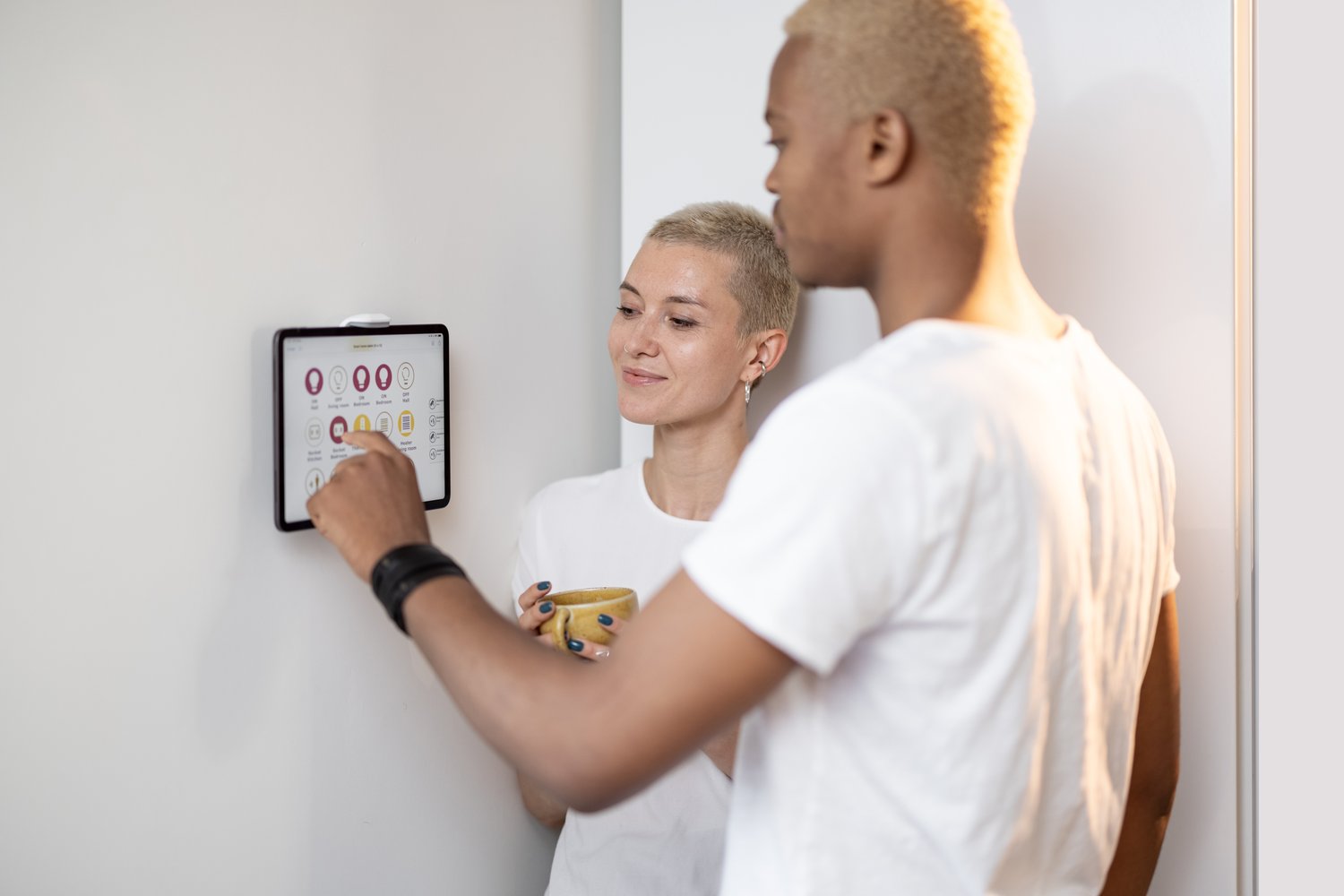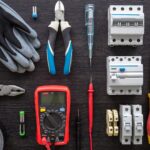Imagine controlling your home’s climate with ease, ensuring comfort while optimizing energy consumption. Thermostat wiring is a critical element in achieving this balance, playing a pivotal role not only in temperature management but also in energy efficiency. Mastering the art of thermostat wiring can transform how you manage your home’s environment, making it an essential skill for any homeowner or DIY enthusiast.
- Understand how thermostats interface with HVAC systems and the significance of different wire colors.
- Learn the essential color codes for thermostat wires to improve your installation and troubleshooting skills.
- Discover the nuances of wiring smart thermostats versus traditional models, and their impact on installation.
- Explore the necessary tools and safety measures to enhance your thermostat wiring experience.
- Identify and solve common wiring issues to ensure your thermostat’s optimal performance.
By exploring these topics, you’ll gain not only practical knowledge but the confidence to tackle thermostat wiring projects with skill. Whether updating your system to a smart thermostat or troubleshooting existing wiring, this article equips you with the expertise to ensure a smoothly running HVAC system.
Understanding Thermostat Wiring Basics: Key Concepts
Before diving into installation or fixes, it’s crucial to understand the core principles of thermostat wiring. The first key concept is how thermostats connect to HVAC systems. This connection is fundamental because it allows your heating and cooling systems to communicate with the thermostat, which regulates the temperature throughout your home efficiently.
Another essential aspect is the role of wire colors. In most thermostat systems, each wire color represents a specific function. By knowing these roles, you can ensure a correct and safe installation, and troubleshoot potential issues with ease. Whether you’re installing a new thermostat or repairing an existing one, mastering these basics can significantly enhance your home’s energy management.
Thermostat Wire Color Codes Explained
Wire color codes in thermostat systems are not arbitrary; each color signifies a specific function that is crucial for the system’s operation. Understanding these codes is invaluable for both successful installations and effective troubleshooting.
Commonly, the red wire is the power wire, delivering essential electricity from the heating or cooling system to the thermostat. The white wire typically controls the heat, while the yellow wire is associated with the cooling system. The green wire manages the blowing fan, facilitating air distribution within your home.
For systems with additional features, you might encounter blue or black wires, which are known as the common wire, or “C-wire.” This wire provides a continuous flow of power to more advanced thermostats, such as smart models, which generally demand more consistent power input than standard ones.
By recognizing and understanding these wire color codes, you effectively arm yourself with the tools to handle most thermostat challenges, enhancing both the installation process and your ability to maintain your HVAC systems.
Thermostat Wiring Basics for Smart Thermostats
The integration of smart thermostats into modern homes has transformed energy management by offering more efficient and convenient ways to regulate temperatures. Understanding the specific thermostat wiring basics for smart thermostats is vital for their successful installation and operation.
Unlike conventional thermostats, smart models often require a C-wire (common wire) to provide continuous power. This is especially important for maintaining a stable connection to Wi-Fi and other smart home systems. If your current system lacks a C-wire, you might need to consider options like a C-wire adapter or additional installation adjustments.
Smart thermostats also differ in the type of systems they can support. Before beginning any installation, it is crucial to verify compatibility with your HVAC system. This helps ensure optimal performance and longevity of your equipment. Always consult the thermostat’s manual and consider professional assistance if you’re uncertain about the setup process.
Furthermore, each manufacturer may have unique wiring requirements. Therefore, learning the specific guidelines for your chosen smart thermostat model is necessary. Understanding these nuances will empower you to switch seamlessly between modes, set schedules more accurately, and utilize all available smart features.
Wiring Your Thermostat: Tools and Safety Measures
Arming yourself with the right tools and observing key safety measures can significantly ease the process of wiring your thermostat, whether it is a smart device or a traditional model. Having essential tools at hand ensures that you’re well-prepared for the installation process, reducing the risk of errors and enhancing the reliability of the connection.
Essential Tools:
- Wire strippers – for safely stripping insulation from the wires.
- Screwdrivers – preferably in multiple sizes to fit a variety of screws.
- Voltage tester – to confirm that electrical circuits are powered off before starting work.
In terms of safety, always turn off the power at the circuit breaker before beginning your work to prevent electrical hazards. It’s important to use the voltage tester to ensure that all components are indeed de-energized. Furthermore, carefully follow all guidelines provided in your thermostat’s instruction manual to avoid inadvertent damage to your HVAC system.
By preparing appropriately and adhering to safety guidelines, you can undertake thermostat wiring more confidently. This not only facilitates a successful installation but also contributes to the safe and efficient functioning of your home’s heating and cooling system.
Common Thermostat Wiring Issues and Solutions
When dealing with thermostat wiring, certain issues tend to arise more frequently. Identifying these common problems and knowing how to address them effectively is crucial in ensuring optimal thermostat performance and preventing further HVAC complications.
One of the most prevalent thermostat wiring issues involves incorrect wire connections. This can lead to a malfunctioning thermostat and irregular heating or cooling cycles. Ensuring each wire is connected to its corresponding terminal according to the thermostat’s instruction manual is imperative.
Loose or disconnected wires can also result in a loss of functionality. Over time, wires can become loose due to vibrations or improper installation. Regularly checking and securing any loose connections can resolve this issue.
Another common problem is short circuits. These occur when wires touch or cross each other, potentially causing the system to shut down or even damaging the thermostat. Carefully arranging the wires and ensuring they are properly insulated can prevent such occurrences.
In some cases, a thermostat may display incorrect temperature readings. This might be due to a faulty sensor, improper placement of the thermostat, or incorrect wiring. Ensuring the thermostat is placed away from direct sunlight and heat sources can provide more accurate readings.
Finally, incompatible thermostats can pose a significant challenge. Ensure that the thermostat installed is compatible with your HVAC system’s specific type. Smart thermostats, for instance, may require more complex wiring compared to traditional models.
By addressing these common thermometers related wiring issues, you can enhance the efficiency and reliability of your home’s heating and cooling system. Proactive identification and solution implementation are key to maintaining a comfortable indoor environment.
Frequently Asked Questions on Thermostat Wiring
What are the common wire colors in thermostat wiring?
Common colors include red for power, white for heat, yellow for cooling, and green for the fan. Always refer to your thermostat’s manual for specific codes.
Can I install a smart thermostat myself?
Yes, many smart thermostats are designed for DIY installations. Ensure you follow instructions carefully and turn off power before starting to ensure safety.
What tools do I need for thermostat wiring?
You’ll typically need a screwdriver, wire stripper, and a voltage tester. Safety gear like gloves is also recommended.
How do I troubleshoot if my thermostat isn’t working?
Check the power source, ensure wires are securely connected, verify correct settings on the thermostat, and consult the manual for specific trouble codes.
Is it necessary to hire a professional for wiring issues?
For complex issues or if you’re unsure, hiring a professional is advisable to ensure safe and proper installation.





